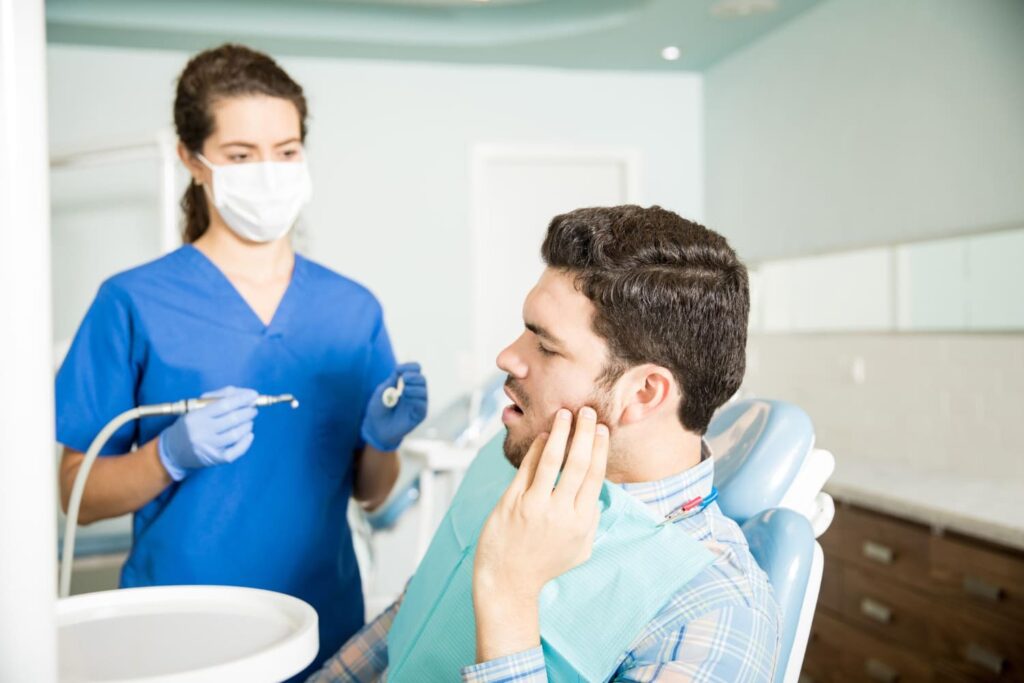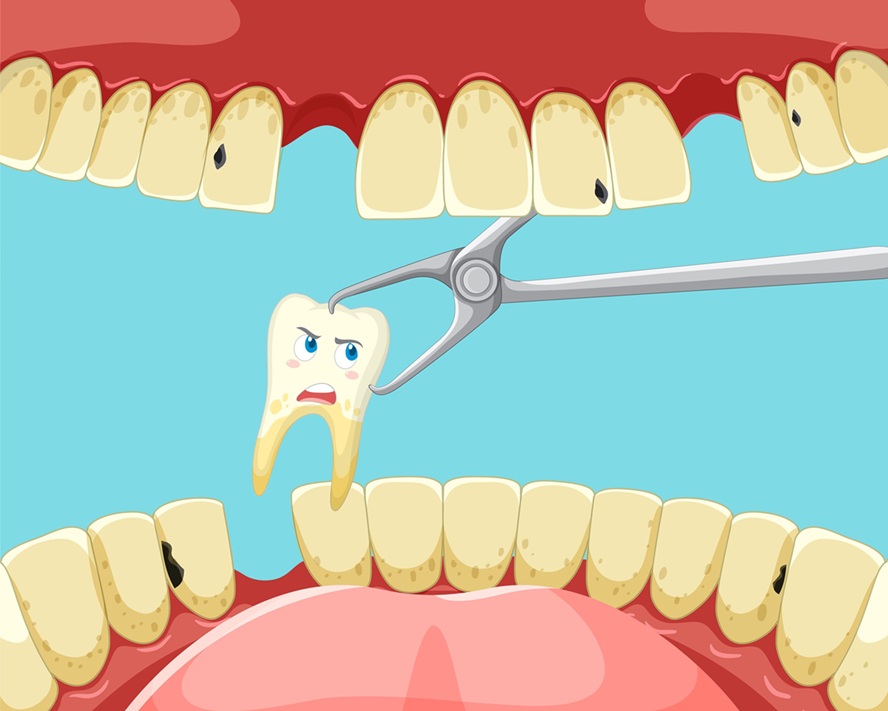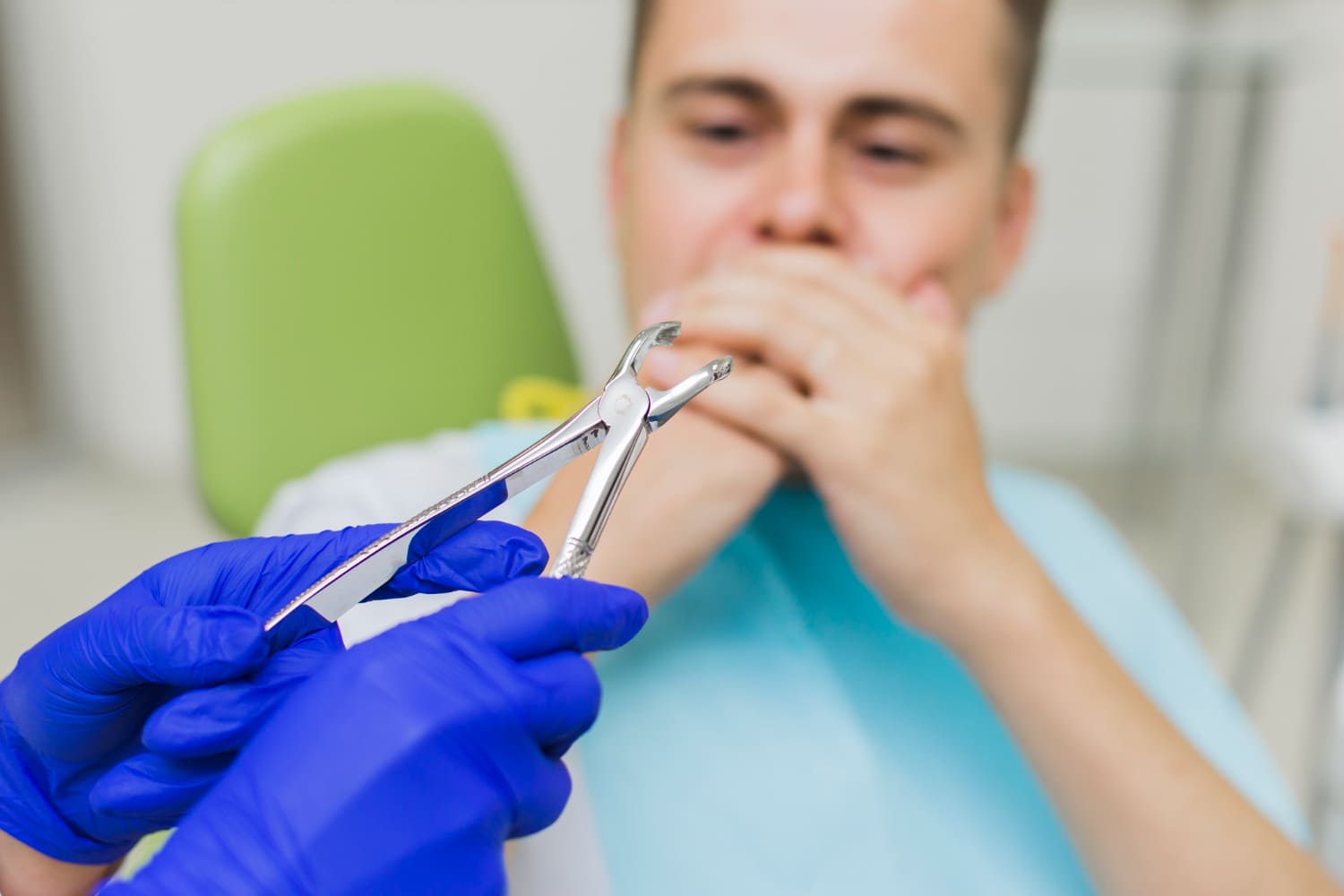Teeth extraction is a common dental procedure that often raises many questions for patients. Whether you’re facing the removal of wisdom teeth, preparing for orthodontic treatment, or dealing with an infected or damaged tooth, the idea of having a tooth pulled can make you feel scared. This guide aims to address some of the most frequently asked questions surrounding teeth extractions—from the reasons are teeth extraction painful, what you can expect after the procedure, cost etc. By answering these FAQs, we hope to ease your concerns and help you feel more prepared for your dental experience.
“Are teeth extraction painful“

Are teeth extractions painful? This is a common concern for many individuals facing this procedure. The idea of having a tooth pulled can be unsettling, especially when it’s associated with pain or discomfort. However, thanks to advancements in modern dentistry, the process of tooth extraction has become far more comfortable and manageable than it once was.
“Dentists now employ a variety of techniques and anaesthetics to minimize or eliminate pain during the extraction process, ensuring that patients have as stress-free an experience as possible”.
Before the extraction begins, your dentist will administer a local anaesthetic to numb the area surrounding the tooth. This numbing agent blocks pain signals from reaching your brain, meaning you won’t feel sharp pain during the procedure itself. Some patients might experience a sensation of pressure or movement as the dentist works to remove the tooth, but this is typically not painful. The goal of the anaesthetic is to make the procedure as painless as possible while still allowing the dentist to work effectively.
“In more complex cases, such as the extraction of impacted wisdom teeth or multiple extractions at once, sedation or general anaesthesia might be used to ensure that you are completely relaxed or even asleep during the procedure”.
“Why tooth extraction for braces“
Teeth extraction is often recommended as part of orthodontic treatment with braces, and it’s a decision made carefully by your orthodontist to achieve the best possible outcome for your smile and oral health.
“The primary reason for extracting teeth before getting braces is to create space in the mouth to allow for proper alignment of the remaining teeth”.
When the jaw is too small to accommodate all the teeth comfortably or when there is significant overcrowding, removing one or more teeth can be necessary to ensure that the braces can work effectively to straighten the teeth and correct bite issues.
Overcrowding is one of the most common reasons for tooth extraction in orthodontics. Many individuals have more teeth than can comfortably fit within the arch of their mouth, leading to teeth that are crooked, overlapping, or misaligned. In these cases, the orthodontist may recommend extracting one or more teeth to make room for the others to shift into their correct positions. Without creating this space, it can be difficult to achieve a straight, well-aligned smile, and the results may not be as stable long-term. Once the teeth are properly aligned, they are less likely to shift back into their original, overcrowded positions, providing a more durable result.
“In addition to overcrowding, bite problems like overbite, underbite, or crossbite may also necessitate tooth extraction”.
For example, if a patient has an excessive overbite, meaning that the upper front teeth significantly overlap the lower front teeth, removing one or more teeth might help to balance the bite by allowing the braces to move the teeth into a more harmonious position. Similarly, in cases of severe underbite or crossbite, where the lower teeth overlap the upper teeth or the teeth are misaligned laterally, extractions can create the space needed for braces to correct these bite issues, leading to improved function and aesthetics.
Another reason teeth might need to be extracted for braces is when a patient has impacted teeth, particularly impacted canines or wisdom teeth.
“Impacted teeth are those that have not fully erupted into the mouth, often due to lack of space, and they remain trapped beneath the gumline”.
This can cause problems for the surrounding teeth and lead to crowding or alignment issues. Extracting impacted teeth allows the orthodontist to create a plan for aligning the remaining teeth properly. In some cases, the orthodontist may extract the impacted teeth and then guide the surrounding teeth into their correct positions using braces.
Though it might seem like a big step, extractions are a safe and common part of orthodontic treatment that helps achieve long-lasting, beautiful results.
“How much tooth extraction cost“

The cost of teeth extraction can vary widely depending on several factors, including the type of extraction, the location of the tooth, your geographic area, and whether sedation or additional procedures are required.
“Simple extractions, which involve removing a tooth that is fully visible and easy to access, typically cost between Rs.900/- to Rs.3000/- per tooth. Surgical extractions, which are more complex and may involve cutting into the gum or removing impacted teeth (such as wisdom teeth), can range from Rs.3000/- to Rs.8000/- per tooth or more”.
The use of anaesthesia or sedation, especially for more involved procedures, can increase the cost further.
“Can I eat after teeth extraction“
After a teeth extraction, one of the most common questions is, “Can I eat after the procedure?” The short answer is yes, but it’s essential to be mindful of what, when, and how you eat to promote proper healing and avoid complications. Your mouth is sensitive after a tooth extraction, and the healing process requires care, especially in the first few days. The food you consume during this period plays a significant role in your comfort and recovery.
Immediately after a tooth extraction, it’s important to avoid eating for the first few hours, allowing the anaesthesia to wear off and the initial clotting process to begin. The clot that forms in the socket is crucial because it helps protect the underlying bone and nerve endings, serving as a foundation for the healing tissue. Dislodging this clot can lead to a painful condition known as dry socket, which can delay healing. Therefore, it’s recommended to stick to liquids, such as water, in the first few hours after the extraction.
“Carbonated beverages, sugary drinks, Hot beverages and alcohol should be avoided, as they can disturb the clotting process and increase the risk of bleeding”.
In the first 24 hours after the extraction, it’s best to stick to a soft food diet. Foods like yogurt, applesauce, mashed potatoes, pudding, and broths are ideal because they don’t require much chewing, reducing the risk of disturbing the extraction site. Cold foods, such as ice cream (without crunchy toppings), can also be soothing, as they help reduce swelling and numb the area slightly. However, it’s important to avoid using a straw during this period, as the suction can dislodge the clot and lead to dry socket.
Another factor to keep in mind is temperature. Eating food that is too hot can cause discomfort or even disrupt the healing tissue, while cold foods can offer relief from swelling. Keeping a balance and choosing lukewarm foods is often the safest bet. Additionally, chewing should be done on the opposite side of the mouth from where the tooth was extracted to avoid applying pressure to the affected area.
By the end of the first week, most people can start to introduce more solid foods back into their diet, as long as they continue to be cautious and avoid foods that could interfere with healing. Every individual heals at a different pace, so it’s important to listen to your body and follow any specific guidelines your dentist provides.
“When brush teeth after tooth extraction“

After a tooth extraction, it’s important to be careful when brushing your teeth to avoid disturbing the healing area. On the day of the extraction, avoid brushing the teeth near the extraction site to allow the blood clot to form properly and minimize the risk of dislodging it. However, you can gently brush the other areas of your mouth as normal, being cautious to avoid vigorous rinsing or spitting. Starting the day after the extraction, you can carefully brush around the extraction site, but use a soft-bristled toothbrush and avoid touching the socket directly. Your dentist may recommend rinsing your mouth with a saltwater solution or a prescribed mouthwash after 24 hours to keep the area clean. It’s important to follow your dentist’s instructions closely for the best recovery.
“Can teeth extraction cause asymmetry“

Can teeth extraction cause facial asymmetry? This is a valid concern, especially for individuals who are considering having one or more teeth removed, particularly in the visible areas of the mouth. Facial symmetry is often associated with beauty and balance, so the possibility of an extraction altering one’s facial structure can cause anxiety. The relationship between teeth and facial aesthetics is significant because teeth, gums, and jawbones work together to support the overall structure of the face.
“However, the likelihood of teeth extraction causing noticeable asymmetry depends on various factors, including the location of the extracted tooth, the number of teeth removed, and how the body adapts post-extraction”.
Teeth play an important role in maintaining facial structure because they help support the jawbone and surrounding tissues. When a tooth is extracted, particularly an adult tooth, the bone in the area where the tooth once was begins to resorb, or shrink. This is because the bone is no longer receiving stimulation from the tooth’s root, which helps maintain bone density. Over time, this bone loss can lead to changes in the shape of the jaw and, potentially, the overall appearance of the face. However, such changes typically occur over a prolonged period and are more noticeable in cases where multiple teeth are removed, especially in older adults.
In most cases, the removal of a single tooth—especially if it’s a molar or wisdom tooth that isn’t visible when smiling—does not significantly affect facial symmetry. For example, wisdom teeth extractions are common, and because these teeth are located at the back of the mouth, their removal rarely impacts the overall appearance of the face. Similarly, the extraction of premolars or molars, which are less visible and play a key role in chewing rather than aesthetics, usually doesn’t lead to noticeable asymmetry. However, if a visible front tooth or several teeth are extracted without replacement options such as dental implants or bridges, there could be subtle changes over time due to the shifting of surrounding teeth and the gradual loss of bone.
It’s also worth noting that the degree to which facial asymmetry may develop after tooth extraction varies from person to person. Factors such as age, genetics, and the individual’s healing process can influence the outcome. Younger individuals, for instance, tend to heal faster and experience less bone loss, while older individuals or those with certain medical conditions might see more noticeable changes over time.

